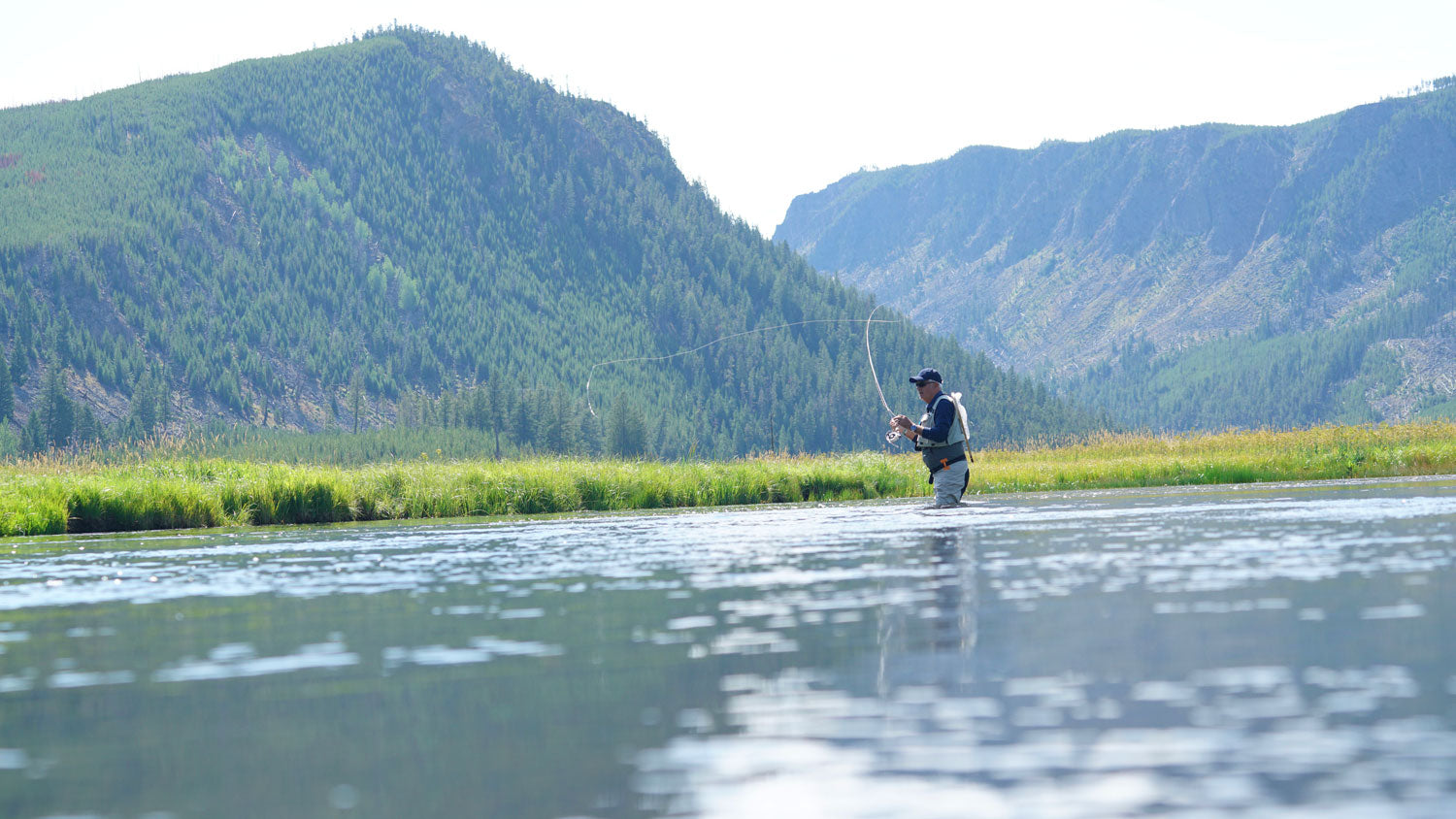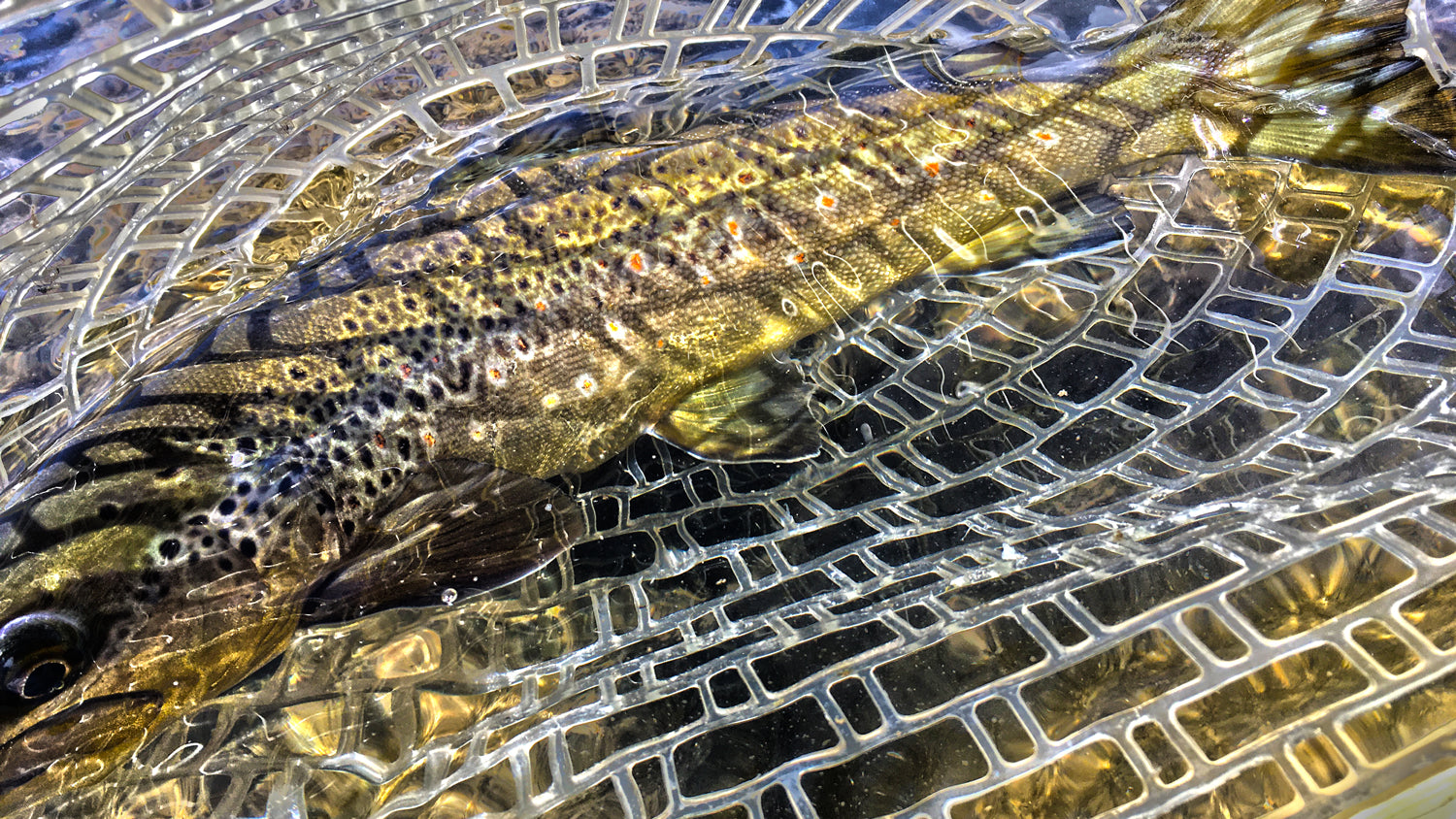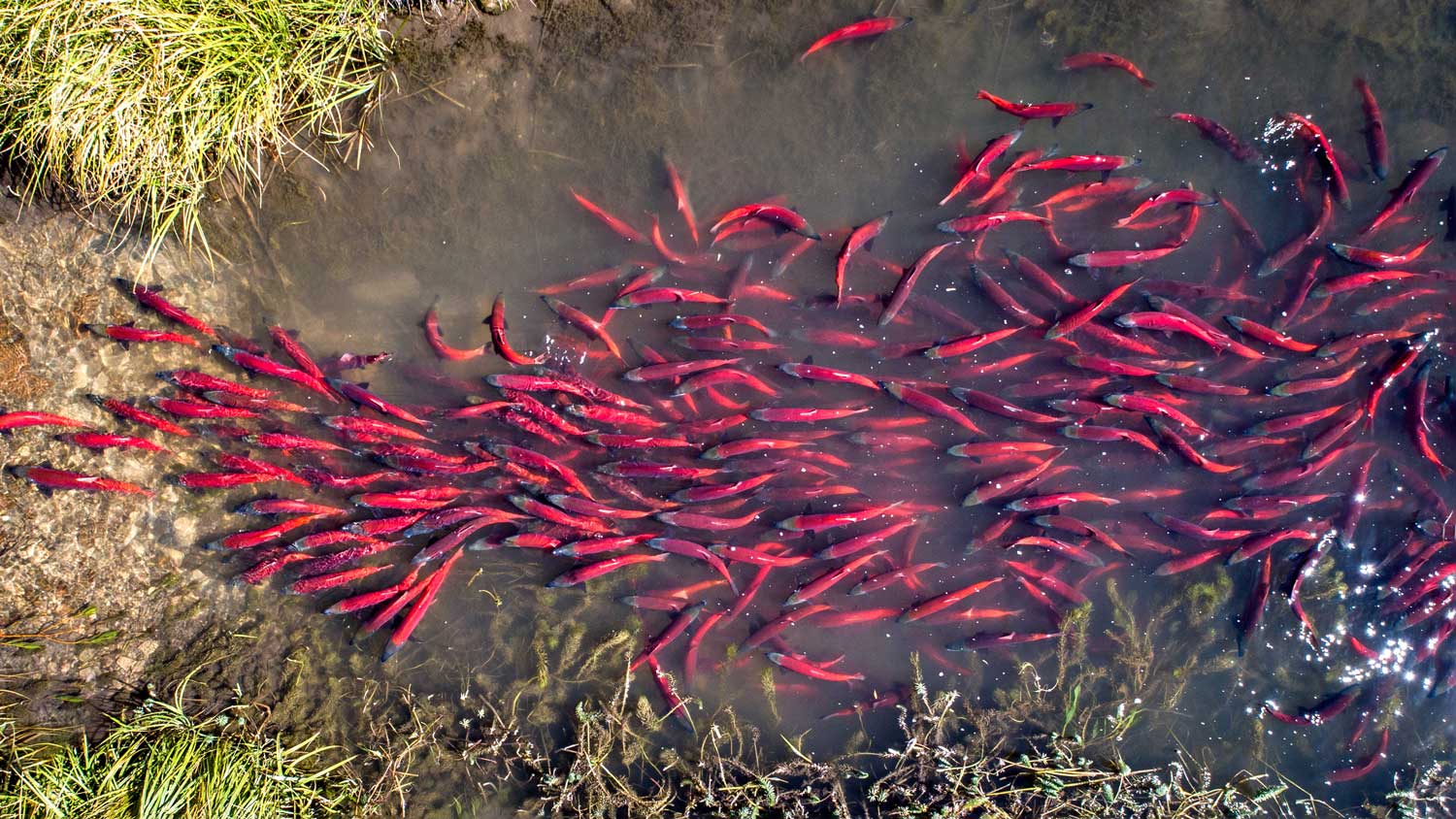Are you interested in fly fishing for wild trout in the US? Our guide will help you understand everything you need to know to get the best experience possible.

Wild trout fishing is seen by many as the most exclusive and challenging type of fly fishing in the US. There are plenty of vast lakes and rivers across North America that provide prime fishing spots for this unique fish. With the right equipment and knowledge, anyone can get started with fly fishing for wild trout. It's all about understanding where to fish, how to fish, and the key regulations/rules.
In this guide, you will learn all the ins and outs of fly fishing for wild trout. All of your most asked questions will be answered, leaving you with crucial information to get started. Carry on reading to find out more!
Where to Fly Fish for Wild Trout
We'll begin with one of the most frequent concerns; where can you go fly fishing for wild trout? Thankfully, the US has a series of excellent rivers, streams, and lakes packed full of this rare fish. This section will walk you through some of the top places to go based on popularity and trout abundance.
Gallatin River
This river is located at the Yellowstone National Park and is well-known for being the number one spot for wild trout. Ironically, those of you with fly fishing prowess have probably spent a lot of time in the Yellowstone area and have never been to this river!
That's because it's not the most famous river in this area, though it is excellent for catching wild trout. Does it have the largest abundance of wild trout? No, but it does have a good concentration of trout that are always keen to go for some bait. This makes it one of the easier places to start fly fishing for wild trout.
As such, it's a great beginner's river to go to - and it also happens to be in a fantastic location. As you get better and want to catch larger trout, it's probably best to move on from here. You won't find any record-breaking fish, but the small trout are never fussy.

Madison River
While we're at the Yellowstone National Park, you may as well take a trip to Madison River. Now, this is a river you've likely come across in your fly fishing days. It's one of the most famous hotspots in the country - and for good reasons.
As far as wild trout go, the Madison stocks thousands in various colors and sizes. Some grow up to 14 inches, giving you a nicely sized fish to take home. Your success is likely to increase when you fish during the spring as the summer months become a bit too warm for the trout here.
For now, don't worry about the fishing conditions as we will discuss them later in this guide!

White River-Bull Shoals Tailwater
We take a trip down to Arkansas for the next river on this list. Interestingly, fly fishing for wild trout is definitely more of a Northern than Southern exercise. This is the only stream in the South that's deemed worthy of your time and attention.
You'll see a collection of stunning wild trout to try and tempt with your bait on this river. The majority are rainbow trout, though you do see some substantial brown trout as well. Rainbow ones can exist in their thousands, with some calculations putting it at 5,000 trout per mile in the river. That's a lot of trout to catch ahold of.

Missouri River
Located in Montana at Three Forks, the Missouri River is a classic fly fishing spot. It's primarily the home of brown trout, though you may find some rainbow ones here. Again, it's mainly suitable for fishing in spring/fall as the weather conditions are perfect.
This is another river that's widely recommended for beginners as it's not too difficult to traverse.

Niagara River
To round off this section, we will end with a surprise entry; the Niagara River. Niagara Falls is famed throughout the world as it sits on Canada and America's border. But, did you know there's a fishing stream just below it?
Here, you have a lovely spot to get your hands on wild trout. We've included this as it presents a unique challenge that none of the rivers possess. Being close to Niagara Falls, the water here is very choppy and free-flowing. So, it's a difficult place to go and fish, though it could be worth the attempt.
We don't recommend this for newbies, but it can be excellent if you're a seasoned fly fisher. Still, a guide is always recommended to ensure your safety in these dangerous waters.

When is the best time to Fly Fish for Wild Trout?
As we alluded to in the first section, the seasons play a significant role in how successful your fly fishing will be. It all depends on the weather conditions, most notably the temperature.
You see, trout enjoy waters that are at a specific temperature. Generally, they like the water to be nice and cool. If it gets too warm, they migrate deeper within the river to the bottom's colder spots. So, they might still be in the river, but you'll never catch any as they don't want to come near the surface.
With that in mind, let's look at all four seasons to see if the conditions hold up well for wild trout fly fishing:
Fly fishing for Wild Trout in Winter
Trout are cold-blooded animals, which means they're less likely to be active in the winter months. If we look at the biology behind this, the cold weather slows down their metabolism. In essence, they get sluggish and don't have the energy to go searching for food.
This makes them almost hibernate in the lower reaches of the water. They don't have the energy or desire to come near the surface, and it's also impossible in many fishing hotspots. Think about it, cold weather brings ice and snow to rivers all across Northern America. As such, it's almost impossible to find somewhere to fish.
Having said that, if you do want to fish in the winter - and some people do - it's best to head to the more Southern regions. Here, the winter temperatures aren't as extreme, and you can still catch some trout. However, this is mainly reserved for individuals that want to test their abilities.

Fly Fishing for Wild Trout in Spring
Generally speaking, spring is the best season for trout fishing. To find the reasoning, we need only look at what trout do in the winter. By hiding away for months on end, they decrease food consumption. So, when the temperature rises, they're eager to feast.
A big part of why trout do nothing in winter is because their food sources dry up. They mostly feed on bugs and insects, both of which are nowhere to be seen. But, as spring comes around, all their food comes back out. It's heaven for trout as they are starving after months of solitude.
For the most part, the temperature is perfect in spring. It's warm enough to encourage trout to come nearer the surface, but not too warm. However, it would help if you kept an eye on temperatures to avoid the month's hot spikes. It's not uncommon to see summer temperatures at points, which will send the trout scampering deeper below the surface.

Fly Fishing for Wild Trout in Summer
It's believed that temperatures between 55 and 60 degrees Fahrenheit are optimal for trout fishing. This is where the cold-blooded animals are most energetic. If it drops to 50 degrees, you will still see some trout actively feeding. Any lower and you get into cold territory where the winter lull begins.
In summer, temperatures above 65 degrees should be a concern. Here, it starts getting too hot for the poor little trout. They become far too sluggish and will migrate to cooler waters. Usually, this means burrowing deeper and deeper. They're not likely to come to the surface for feeding, so you're wasting your time.

Fly Fishing for Wild Trout in the Fall
Finally, you have the fall season, which can be a frustrating time to fish for trout. It is sometimes the second-best season to fish, largely because it mimics the spring conditions.
As summer comes to an end, the temperatures cool, and the trout come back out. Again, they're eager to eat as the hot weather kept them away for many weeks. But, the problem is that this season is so temperamental. You can often go from summer to winter in the space of a couple of weeks. So, you have a very narrow window to get some trout fly fishing in!
Overall, spring is the best time to fish for trout, and winter is probably the worst. It's good to track temperatures when you're fishing to ensure there will be trout out and about. Also, this section should explain why most of the top trout locations are in the North. The cooler weather makes it easier for trout to survive compared to the warm streams in the South.

What equipment do you need for wild trout fly fishing?
Naturally, you need to know what equipment to bring as you go fishing for wild trout. The precise amount of gear you bring can vary. Some accessories are not essential but can be helpful.
To start, we'll go through the essential things you can't go without:
- A fly rod
- A fly reel
- Fly lines
- Curated Flies
How to choose your fly rod for wild trout fly fishing
Fly fishing rods are available in different weights and sizes. The exact rod you choose will depend on where you're fishing and what you're fishing for. These rods are typically given a number to determine their weight: 2 is the lowest, and 12 is the highest.
You should aim for a rod ranking from 4 to 6 in weight when it comes to trout fishing. Any lighter than this, and it can be tough to reel the trout in. Essentially, the lighter the rod, the harder it is to catch fatty fish. You could still find some trout, but usually, only smaller ones will stick.
As for the length, 9 feet is probably the perfect length for most people. However, it does depend on where you're fishing. For small streams, maybe reduce this to 8 feet. For larger still waters, a 10 feet rod can do the trick.
What are the rod pieces?
When shopping for fly fishing rods, they will be advertised as having a set amount of pieces. Don't be overly worried about this. It just refers to how many parts make up the rod.
The more pieces it has, the easier it is to fit inside a backpack. It basically means you can take it apart into smaller sections. It won't impact your fishing, but it can make life easier when moving from place to place.

What about the rod action?
Fly fishing rods will also have a specific action. This will either be:
- Fast action
- Moderate Fast Action
- Moderate Action
- Slow Action
Slow action rods bend in the bottom third of the rod while fast action ones bend in the top third. Often, medium action rods are preferred as they bend in the middle. So, you get the best of both worlds.

How to choose a fly reel
A fly reel will return your fly line without you needing to crank away at it. Therefore, it's a key piece of equipment - especially when fishing for heavy trout. Prices vary depending on brands and quality, but there are two key things to keep in mind.
Firstly, make sure the fly reel matches the weight of your rod. If you get a 5 weight reel for a two weight rod, the balance of the rod will be off.
Secondly, pay attention to the drag system as this keeps the pressure on the fish. Essentially, it stops it from breaking away or snapping your rod.

How to Choose Fly Lines
You need a line to fish for trout! A typical fly line is anywhere from 80 to 90 feet long. A floating fly line is highly recommended, as it is easy to cast out into the water.
It would help if you also had some backing for your fly line. Think of this as an insurance policy in case an incredibly angry trout latches on. It gives your line some extra length and tension to avoid it from completely running out. You won't use the backing all the time, but you'll be glad to have it when you do.
What Fly Should I Use for Fly Fishing for Wild Trout?
If you think back to our section on the different fishing seasons, you'll remember we stated that trout eat bugs and insects. This is why they're perfect for fly fishing as you can tempt them in for a bite.
You will find a plethora of excellent trout files online that are fit for this purpose. A general rule is to have a mixture of different patterns to choose from. This helps you replicate the various insects a trout will usually go after. As you shop around, you'll see that the flies are split into three main categories:
Nymphs are used to replicate young and immature insects that trout are likely to feast upon. They are typically submerged in the water to attract attention.
Dry flies are highly popular and are most people's go-to option. Here, you replicate a fly that floats on the surface of the water. It doesn't get wet, but it makes the trout think there's a dead fly ripe for the taking
Streamers are slightly different in that they go beneath the surface but replicate smaller fish. Some trout like to eat these, though nymphs and dry flies are probably your best options.
What fly fishing accessories should I buy for Wild Trout?
The accessories you include on your trips depend on where you're going. Here's a quick list of some additional items you may want to bring:
- Wading gear to wade into shallow waters
- Hat
- Sunglasses
- A net
Typically, you can still go fly fishing without any of the items listed above. Also, you will find many more accessories if you look online. Your primary consideration should be the items mentioned before: rods, lines, flies, reels, etc.
Are there any rules when fly fishing for wild trout in the US?
Check your local waters on any specific regulations for fly fishing for wild trout. Some species are protected and all states require a license to fly fish.
Upon catching your trout, it's customary to send it back into the water. You can hold it up or measure/weigh it, but it should be put back in the water within a few seconds. This helps conserve the wild trout population in the US, and it's widely frowned upon to kill trout and take them home.
On that note, we can conclude this guide. If you have any further questions regarding fly fishing for trout, don't hesitate to ask. We also have many other resources on our website that you will find incredibly useful.
About the Author
Matthew Bernhardt, a third-generation Coloradan, grew up at the forefront of the state’s fly-fishing revolution, enjoying time on the water, side by side with experienced guides and lifelong anglers.
By combining his passion for fly-fishing with input from other experienced fly-fishers and guides and his fine arts degree from Colorado State University, Matthew spent five years carefully developing the Drifthook Fly Fishing System, built to help every angler catch more trout.
When he’s not spending time with his wonderful family, you’ll find him out on the water catching MONSTER trout, and he anxiously looks forward to the day when his kids are old enough to join him there.





